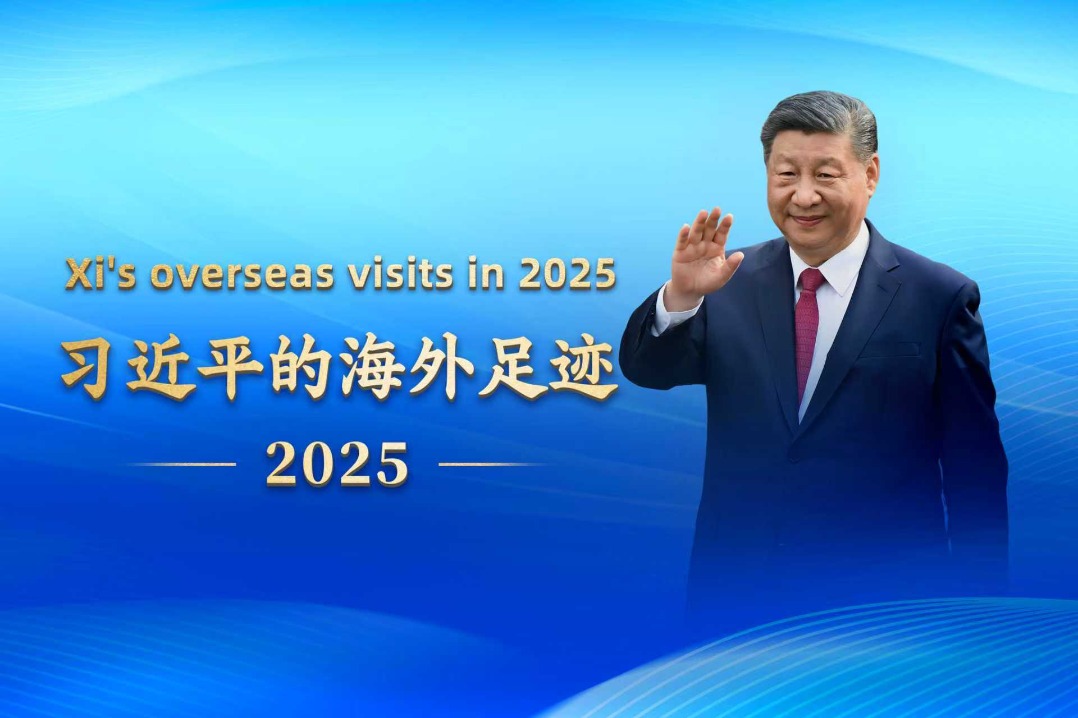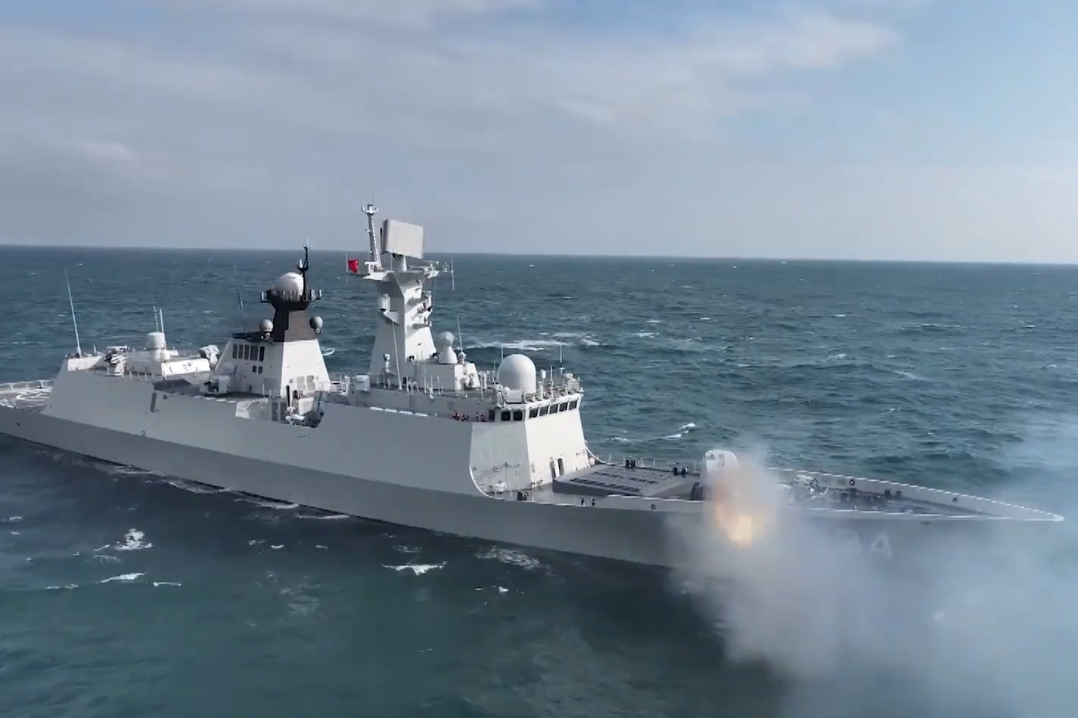Proactive policy helps address price weakness
By Xiao Lisheng and Li Xiaojian | China Daily | Updated: 2024-11-11 09:34

The latest data show that the downward pressure on China's price levels is still a drag on the country's economy. In September, the growth rate of the consumer price index, the main gauge of inflation, fell by 0.2 percentage point year-on-year to 0.4 percent, remaining flat month-on-month.
Compared to consumer goods, the performance of industrial prices has been even more gloomy, with the growth rate of the producer price index — which measures factory gate prices — declining by 2.8 percent in September, down 1.0 percentage point from August.
Viewed from a longer perspective, China's PPI had remained in negative territory for 24 consecutive months, from October 2022 to this September.
The persistent low-level movement of price levels has also weighed on the country's nominal growth, as the GDP deflator — or the ratio of nominal GDP to real GDP to gauge the change of prices for all goods and services produced in the country — has been below zero since the third quarter of 2023.
This not only dampens economic sentiment among households, but also constrains the profitability of enterprises and the performance of asset prices.
Specifically, China's price movements have several characteristics. Driven by the rebound in pork prices cycle, food prices have performed relatively strongly, with food and tobacco prices in the September CPI growing 2.3 percent year-on-year, providing support to the overall CPI.
The core CPI growth rate has continued to decline, falling to 0.1 percent year-on-year in September, an extremely low level in recorded history, with housing rents being an important drag.
Prices of durable consumer goods, such as transportation vehicles, communication equipment and household appliances, have continued to decline, reflecting the current imbalance between supply and demand in the commodity market.
The lack of downstream demand has led to faster declines in upstream industrial goods prices, with the month-on-month PPI for production materials decreasing by 0.3 percent, 1.0 percent and 0.8 percent in July, August and September, respectively.
Insufficient domestic effective demand is the main reason for the relatively low price levels. In the third quarter, China's real GDP growth was 4.6 percent year-on-year, with final consumption expenditure, gross capital formation and net exports of goods and services contributing 1.35, 1.28 and 1.97 percentage points, respectively.
It can be seen that the driving force of domestic demand on economic growth is not as strong as that of external demand. In particular, the deep adjustment of the real estate market may be a key factor constraining domestic aggregate demand.
On the one hand, real estate development investment is an important component of domestic demand, and the cumulative year-on-year growth rate of China's real estate development investment from January to September plunged 10.1 percent.
On the other hand, the adjustment of the real estate market has brought about a negative wealth effect and has had a significant impact on a wider range of consumption areas.
In the aftermath of the eurozone debt crisis that erupted in the late 2000s, the common currency area found itself mired in a prolonged period of declining price levels.
The crisis was ignited in late 2009, when the three major ratings agencies successively downgraded Greece's sovereign credit rating, setting off a chain reaction that soon engulfed other eurozone members, including Portugal, Ireland, Italy and Spain.
As the debt crisis spread from the government sector to banking and real estate, the eurozone economy was dragged into a protracted slump.
After arduous negotiations, a 750 billion euro ($806 billion) rescue mechanism, including the European Financial Stability Mechanism and the European Financial Stability Facility, was established in May 2010. However, the bailout package also required debt-ridden countries to implement strict fiscal austerity measures, further exacerbating the eurozone's short-term economic downturn.
The impact of these developments became increasingly apparent in the following years, as the eurozone's Harmonized Index of Consumer Prices and PPI growth rates began a prolonged downward spiral.
From 2013 to 2016, the eurozone PPI remained in negative territory, while the HICP flirted with deflation, underscoring the persistent deflationary pressures weighing on the region.
Bolstered by the European Central Bank's resolute monetary policy intervention, the eurozone saw the turning point come in the second half of 2016, when price levels in the eurozone began to recover after hitting their bottom.
The catalyst for this shift was the appointment of Mario Draghi as the ECB's third president in November 2011. Draghi and his team subsequently unveiled a series of bold policy actions to tackle deflationary pressure.
The ECB lowered its deposit facility rate to zero in July 2012 and officially introduced negative interest rates in June 2014.
The central bank also rolled out a raft of unconventional monetary policy tools, including the Long-Term Refinancing Operations and Outright Monetary Transactions, which not only provided ample liquidity to the banking sector, but also effectively reduced the eurozone's risk-free rates and yield spreads.
The ECB also strengthened its communication with markets, using forward guidance to influence market expectations about the future path of interest rates, thereby bolstering confidence.
In addition to the ECB's decisive monetary policy moves, the brightening external environment had also played a crucial role in easing inflationary pressure within the eurozone.
Beginning in 2016, the PMI in the manufacturing sectors of both China and the United States started to recover in sync, signaling the onset of a new global economic upswing.
The eurozone's experience in tackling the threat of deflation in the aftermath of the debt crisis has provided valuable lessons and insights for China's policymakers.
One of the key takeaways is the importance of introducing accommodative monetary policy measures at the very onset of a risk event, in order to get ahead of the curve.
Within the traditional macroeconomic analytical framework, the sustained decline in price levels is not a conventional situation, and therefore cannot be effectively addressed using standard control measures and tools.
It was against this backdrop that the ECB boldly deployed a trio of unconventional policy instruments — zero interest rates, quantitative easing and forward guidance.
The ECB's willingness to think outside the box and utilize these innovative tools was crucial in improving market confidence and liquidity conditions, which in turn helped drive the recovery in price levels.
Historical data show that Southern European countries, which were undergoing fiscal consolidation, faced significantly greater deflationary pressures compared to the core eurozone economies like Germany and France.
These observations clearly indicate that the combination of accommodative monetary policy and proactive fiscal expansion has been crucial in driving a more robust and sustained rebound in the eurozone's price levels.
As the eurozone's experience in overcoming its deflationary challenges has demonstrated, the effectiveness of accommodative domestic policies is significantly enhanced when they are complemented by an improving external environment.
In the case of the eurozone, the region's ability to emerge from the deflationary quagmire in 2016 was not solely the result of the ECB's persistent monetary policy easing. The broader global economic recovery also played a crucial role in alleviating the eurozone's deflationary pressure.
Xiao Lisheng is director of Global Macroeconomy Research Division under the Institute of World Economics and Politics, which is part of the Chinese Academy of Social Sciences. Li Xiaojian is a researcher with Jiufang Research Institute.
The views do not necessarily reflect those of China Daily.
























